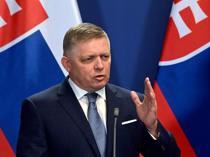S Korea discussing participation in AUKUS tech pact: defense minister
SEOUL

South Korea's defense minister on Wednesday said his country was actively discussing participation in a landmark defense technology pact between Australia, the United Kingdom and the United States.
"During today's meeting we also discussed the possibility of partnering with AUKUS pillar two," Shin Won-sik said, referring to a pact focused on developing hypersonic weapons, drones and other advanced technologies.
Shin was speaking after a meeting of Australian and South Korean defense and foreign ministers in Melbourne.
AUKUS was established in 2021 with two main goals in mind: "Pillar one" aims to provide Australia with a fleet of nuclear-powered attack submarines. South Korea is not expected to be part of that project.
"Pillar two" focuses on developing advanced warfighting capabilities such as artificial intelligence, undersea drones and hypersonic missiles.
Australia, the United Kingdom and the United States have said they are open to other partners taking part, with Japan, South Korea and New Zealand all said to be in consideration.
Shin welcomed his country being considered as a means to "enhance regional peace".
"Korea is obviously a country with deeply impressive technology," said Australian defense minister Richard Marles. "So as AUKUS pillar two develops, I think there will be opportunities in the future".
Bordered by North Korea, Seoul has one of the largest and most technologically advanced militaries in the region.
"We do welcome that AUKUS members are considering Korea as an AUKUS pillar two partner," Shin said. "Korea's defense, science and technology capabilities will contribute to peace and stability, (and to) the development of AUKUS pillar two."
AUKUS has been strongly opposed by China, which sees the pact as provoking division in Asia and risking nuclear proliferation.
In recent years, Beijing has tried to chip away at US influence across the Pacific.
Washington has responded by trying to bind allies tighter together through a latticework of bilateral and multilaterial pacts.
















